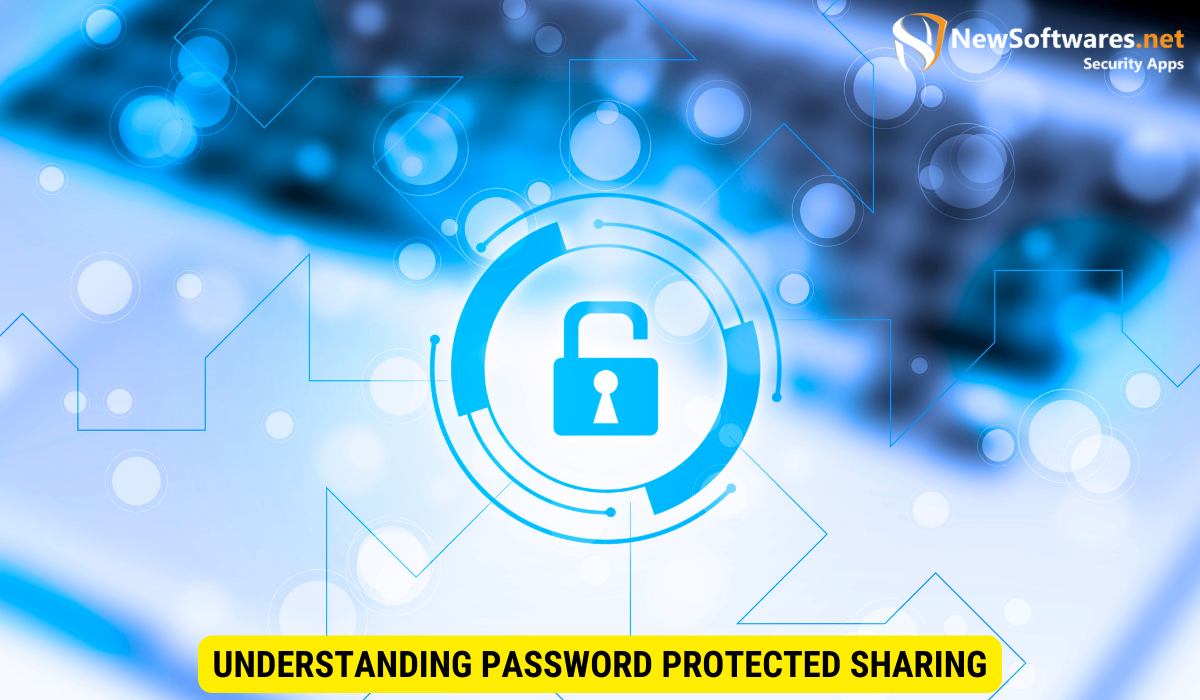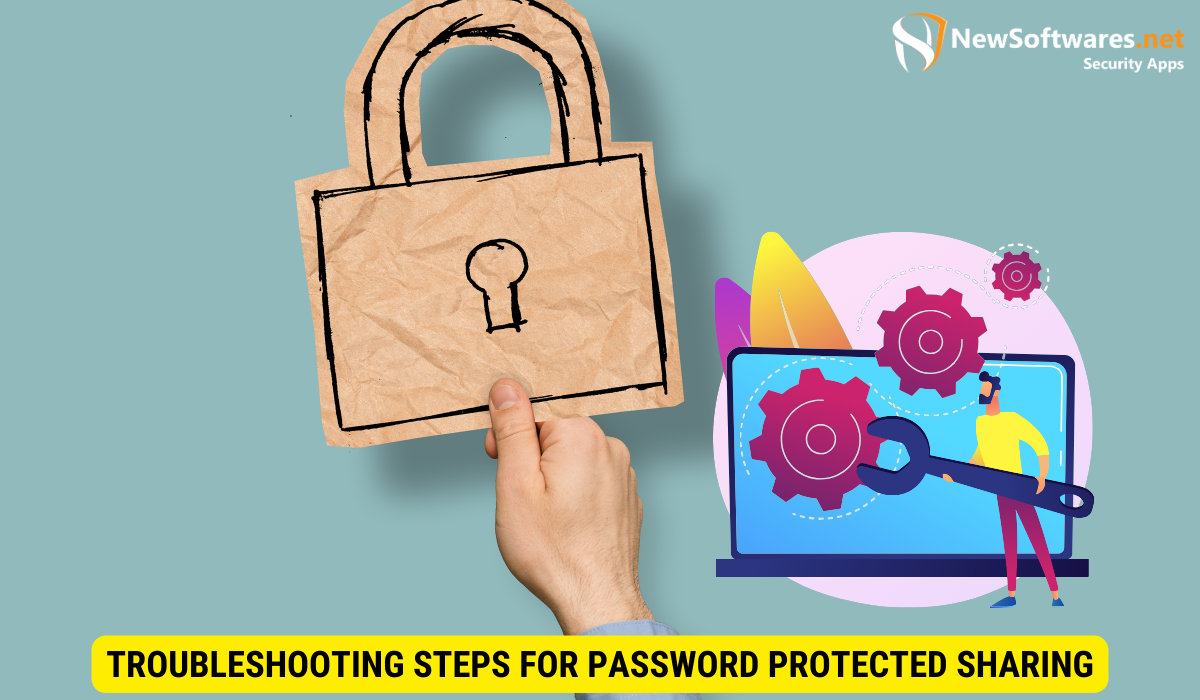If you’re unable to turn off password protected sharing, try restarting your device, disabling conflicting security software, and ensuring correct network settings. If issues persist, advanced troubleshooting involving registry modifications or network resets may be necessary.
Password protected sharing is a crucial aspect of ensuring the security of your shared files and folders. However, there may be instances where you encounter difficulties in turning off this feature. I we will explore the concept of password protected sharing, common issues that arise, troubleshooting steps to overcome them, and measures to ensure the ongoing security of your shared resources.
Understanding Password Protected Sharing

Password protected sharing is a feature of file sharing that adds an additional layer of security by requiring a password to access shared files and folders. This feature is particularly useful in preventing unauthorized access to sensitive information or confidential data. By enabling password protected sharing, you can control who can view or modify your shared resources.
The Basics of Password Protected Sharing
To enable password protected sharing on a Windows operating system, follow these steps:
- Open the Control Panel and navigate to the Network and Sharing Center.
- Click on the Change advanced sharing settings option.
- Under the Private or Public network profile, locate the Password protected sharing option and select Turn off password protected sharing.
- Click on Save changes to apply the settings.
The Importance of Password Protected Sharing
Enabling password protected sharing is essential for safeguarding your shared files and folders. It ensures that only authorized individuals with the knowledge of the password can access your resources. This prevents potential security breaches and unauthorized modifications that could compromise the integrity and confidentiality of your shared data.
Imagine a scenario where you have just finished working on a highly confidential project. You need to share the files with your team members, but you want to ensure that only those who are authorized can access the information. This is where password protected sharing becomes invaluable. By setting a strong password, you can rest assured that your sensitive data remains secure, even if it falls into the wrong hands.
Furthermore, password protected sharing also allows you to have granular control over who can view or modify your shared resources. You can share the password with specific individuals or groups, ensuring that only those who need access can obtain it. This level of control is crucial in maintaining the confidentiality and integrity of your shared data.
Common Issues with Password Protected Sharing
While password protected sharing is a valuable security feature, it can occasionally present challenges for users. Here are some commonly encountered issues:
Can’t Turn Off Password Protected Sharing: A Common Problem
In some cases, users may find themselves unable to turn off password protected sharing despite following the correct steps. This can be frustrating, but there are solutions available to address this issue.
One possible reason for this problem is a glitch in the system. Sometimes, when updating the operating system or installing new software, certain settings may become locked, preventing users from disabling password protected sharing. In such cases, a simple workaround is to restart the device and try again. This often resolves the issue by resetting any temporary system errors that may have occurred.
Another common cause of this problem is a conflict with other security software or firewall settings. Sometimes, third-party antivirus programs or firewall configurations can interfere with the ability to turn off password protected sharing. In such cases, it is advisable to temporarily disable any conflicting software or adjust the firewall settings to allow the necessary changes. Once the changes have been made, users can attempt to disable password protected sharing again.
Other Frequently Encountered Issues
Aside from difficulties in disabling the feature, users may encounter various other problems related to password protected sharing. These can range from forgotten passwords to compatibility issues with certain network configurations or devices.
Forgetting the password for password protected sharing is a common issue that many users face. This can happen when users set a complex password and then forget it over time. To overcome this, it is recommended to use a password manager application that securely stores passwords and allows easy retrieval when needed. Additionally, users should consider creating strong, memorable passwords or using password recovery options provided by the operating system.
Compatibility issues can also arise when using password protected sharing on different network configurations or devices. Some older routers or network setups may not fully support this feature, leading to connectivity problems. In such cases, updating the firmware of the router or seeking assistance from the device manufacturer’s support team can help resolve the issue. It is also worth checking if the devices being used are compatible with password protected sharing and if any firmware updates are available.
Troubleshooting Steps for Password Protected Sharing

If you are experiencing problems with password protected sharing, there are several troubleshooting steps you can take to resolve the issue.
Firstly, let’s delve into the initial checks and simple fixes that can often help identify and resolve the problem. Verifying network settings is a crucial step, as incorrect settings can hinder the proper functioning of password protected sharing. Double-checking that the correct password is entered is also essential, as a simple typo can prevent access to shared files and folders. Additionally, restarting devices can sometimes work wonders, as it allows for a fresh start and can clear any temporary glitches that may be causing the issue. Lastly, checking for software updates is important, as outdated software can lead to compatibility issues and hinder the smooth operation of password protected sharing.
However, if the simple fixes mentioned above do not resolve the issue, fear not! There are more advanced troubleshooting techniques that you can try. These techniques may involve modifying registry settings, which can be a bit daunting for some users, but can often provide a solution to the problem at hand. Resetting network configurations is another option, as it can help eliminate any misconfigurations that might be causing the issue. For those who prefer a more guided approach, Microsoft provides specialized troubleshooting tools that can assist in diagnosing and resolving password protected sharing problems. These tools are designed to analyze network settings, identify potential conflicts, and suggest appropriate solutions.
By following these troubleshooting steps, you can increase your chances of resolving password protected sharing issues and regain seamless access to shared files and folders. Remember, patience and persistence are key when troubleshooting, as it may take a few tries to find the perfect solution for your specific situation.
Ensuring Your Shares Remain Secure
While troubleshooting password protected sharing issues, it is essential to maintain the overall security of your shared files and folders. Here are some best practices:
Best Practices for Secure Sharing
Implement robust password policies, regularly review and update permissions, and educate users about safe sharing practices. Additionally, consider utilizing encryption technologies for enhanced data protection.
Tools and Software for Enhanced Security
Explore the various tools and software available to augment the security of your shared resources. Virtual Private Networks (VPNs), firewall software, and intrusion detection systems can provide additional layers of defense against unauthorized access.
Moving Forward: Preventing Future Issues with Password Protected Sharing
As technology evolves, new security features may be introduced, and existing ones may be updated. To ensure ongoing security and avoid future problems with password protected sharing, consider the following:
Regular Maintenance and Updates
Regularly maintain and update your operating system, security software, and file sharing applications. Applying the latest patches and security updates helps mitigate vulnerabilities and ensures compatibility with evolving security standards.
Understanding and Adapting to New Security Features
Stay informed about the latest security features and functionalities introduced in file sharing systems. Familiarize yourself with these enhancements and adapt your security practices accordingly to stay ahead of emerging threats.
Key Takeaways
- Password protected sharing adds an extra layer of security to shared files and folders.
- Difficulty in turning off password protected sharing is a common issue, but there are troubleshooting steps available.
- Regular maintenance, updates, and adherence to best practices ensure continued security.
- Understanding and adapting to new security features is essential for long-term protection.
FAQs
Can I disable password protected sharing on a Mac operating system?
While password protected sharing is a feature primarily associated with Windows operating systems, Mac users can achieve similar results by setting permissions on shared files and folders and utilizing encryption options.
Why is password protected sharing important?
Password protected sharing helps prevent unauthorized access to shared files and folders, ensuring the privacy and security of sensitive information.
Are there any alternatives to password protected sharing?
Yes, alternatives to password protected sharing include using encryption techniques, implementing access control lists, or deploying advanced file sharing solutions with built-in security features.
Can I share files securely without using password protected sharing?
Yes, other security measures such as encryption, secure file transfer protocols, and access controls can be utilized to enhance the security of shared files and folders.
Can password protected sharing be used for cloud storage services?
Some cloud storage services offer password protection as an additional security feature. However, it is important to review and understand the specific security features and settings provided by the cloud provider.
Conclusion
Password protected sharing is a valuable security measure to protect your shared files and folders. Despite encountering obstacles in disabling this feature, troubleshooting steps and best practices can help resolve issues and preserve the integrity of shared resources. By staying proactive and staying informed, you can ensure that your shared files remain secure and prevent future complications with password protected sharing.
